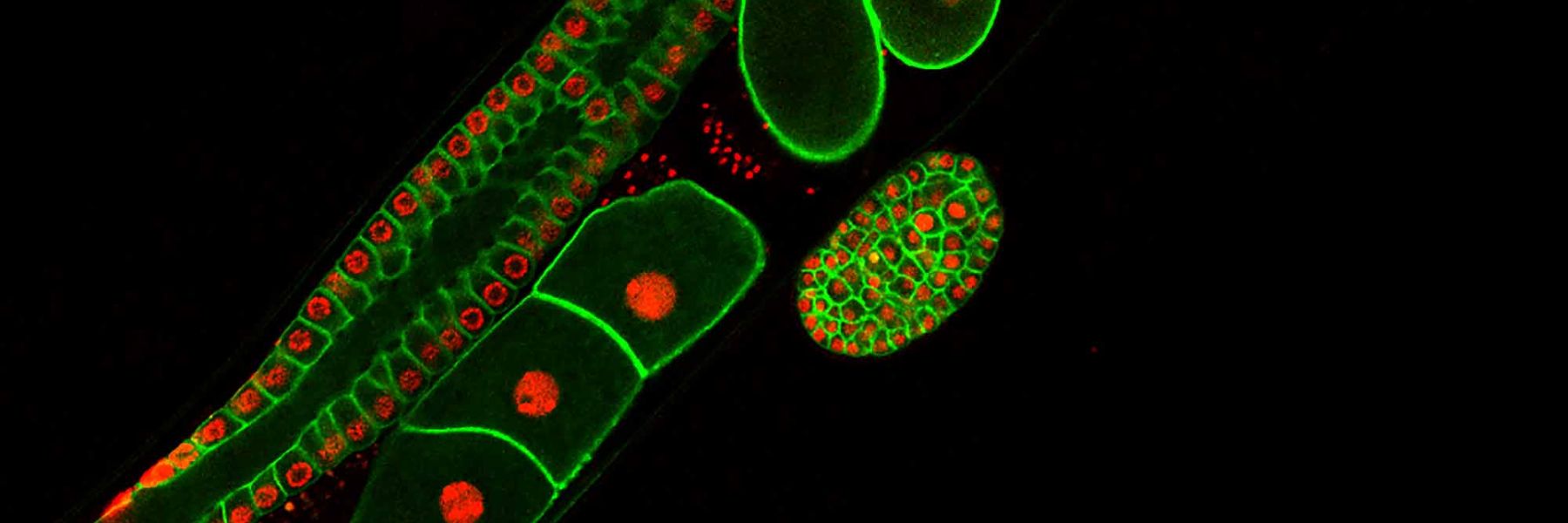Researchers in MCDB are using genetic and genomic tools to investigate fundamental questions of cell and developmental biology in a wide variety of plant, microbial, and animal organisms. Research teams are investigating both established model systems, such as mice, embryonic and induced stems cells, Drosophila, C. elegans, Arabidopsis, and a number of marine model organisms including the ascidians Ciona and Botryllus, and the sea urchin Strongylocentrotus purpuratus. Ongoing genetic studies are shedding new light on the mechanisms underlying cancer, organ development, regeneration, fertilization, cell signaling, sensory signaling, animal behavior, transcriptional regulation, and microbial pathogenesis (among others). Research teams in MCDB have played important roles in genome projects including those for the ciliate protozoa Tetrahymena, the ascidian Ciona, and the marine sponge Amphimedon queenslandica. MCDB is home to organized genetic resource centers for Tetrahymena and Ciona. Facilities available to genetic and genomic researchers includes on site next-generation sequencing, a shared state of the art microscopy facility, and extensive resources for the study of marine organisms.
